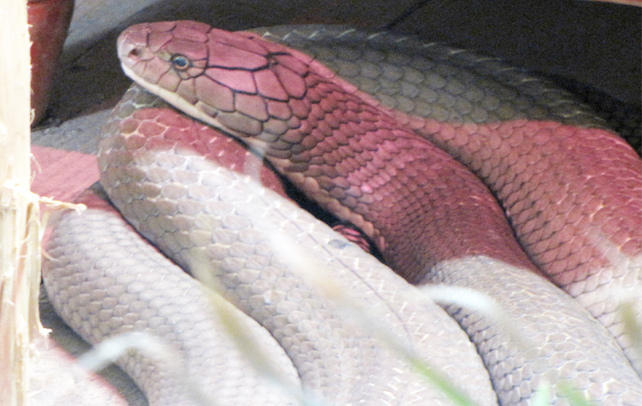Amazing Information About Cobras

Cobra is a venomous snake, which belongs to the Elapidae family, though not all cobras belong to the same genus or the same family. ‘Cobra’ is actually a short name for cobra capo or capa snake, which is the Portuguese name for ‘snake with hood’ or ‘hood-snake’. Generally regarded as timid, if threatened, they rear up and spread the hood or neck as a sign of warning. As per experts, there are about 270 species of cobras spread over Asia and Africa, which eject extremely powerful venom through their fangs, delivering neurotoxins, which results in necrosis and respiratory collapse, often leading to death, if anti-venom is not given in 30 to 60 minutes. Though numerous types and sub species of cobras exist all over the world such as King Cobra, Cape Cobra, Egyptian Cobra and Indian Spectacled Cobra, they share some common characteristics. In this, the greatest and fearsome of them all, King Cobra is not a true cobra as it belongs to a separate genus from other cobras. Check out some interesting and amazing cobra facts that might take you by a surprise.
Fast Facts
Type: Reptile
Origin: Africa, Asia, India
Diet: Carnivore (lizards, birds, snakes and rodents)
Size: 13 feet (4 m)
Weight: Up to 20 lbs (9 kgs)
Group Name: Quiver
Lifespan: 20 to 30 years
Habitat: Savannas, open woodlands, plains, and rocky hillsides
Sexual Maturity: 5 to 6 years
Gestation Period: 45 to 80 days
Number of Offspring: 12 to 60 depending upon species
Amazing Information About Cobras
- Cobras come in different varieties ranging from black, dark brown and yellowish white.
- You can identify them by the hood, which they flare up when they get angry or disturbed.
- Cobras lift their head high up from the ground to search for food. They also hiss noisily to frighten the possible predators.
- King Cobra is almost 18 feet (5.5 meters) in length and is the longest and most venomous of all.
- King Cobra can actually stand up and appear like an adult, which makes it scary.
- Its venom delivers a huge amount of neurotoxin (almost seven millilitres) in a single bite that it is powerful enough to kill 20 people or even an elephant.
- Luckily, King Cobras are timid and avoid humans whenever feasible, but turn ferocious and hostile when disturbed.
- Cobras slay their pray by injecting poison through their tooth. Neurotoxin stops the breathing and heartbeat of the victim.
- Cobras smell their prey using their forked tongue. The tongue goes in and out, picking the scent particles from the ground and passes it to a smelling organ called Jacobson’s organ. This enables the snake to snuffle out its next meal.
- A cobra’s main preys are mouse, rat, rabbit, ground squirrel, though they also like to eat amphibians, lizards, snakes, eggs and birds.
- Cobras can live without eating for days or months based on how hefty their previous meal was. Its slow metabolism makes this possible.
- A cobra’s biggest enemy is mongoose, an animal which is very quick that it can dart in and bite the back portion of cobra’s neck before it defends itself.
- There are some cobra species, which pretends to be dead and lie completely until they realise that the threat is no longer present.
- Similar to all snakes, cobra’s chin has two independent bones which are attached droopily to its skull. This enables the snake to gulp an animal, which is wider than its head.
- The baby cobra, called hatchling, like its parents can defend itself even in the initial days and spread its covering and strike.
- Spitting cobra, one of the species of cobras, though not fatal on contact, can cause blindness. It can also lead to skin scarring, if the bite is left untreated.
- Though the names suggests otherwise, spitting cobras do not discharge the venom. They spray it by pressing the muscles on the venom glands, thus forcing the venom out on front openings in the tooth. If cornered, they spit to a distance of about 6.5 meters.
- Though cobras can hear, they are deaf to the ambient sounds and sense the ground vibrations. The charmers flute attracts the cobra, not by the music it produces, but by its form and movement.
- The venom of synthetic cobra venom is used in pain relievers and arthritis medicines.
- Cobras are the rarest of snakes in the world, which put up nests for their eggs, which they guard intensely till the eggs are hatched.









